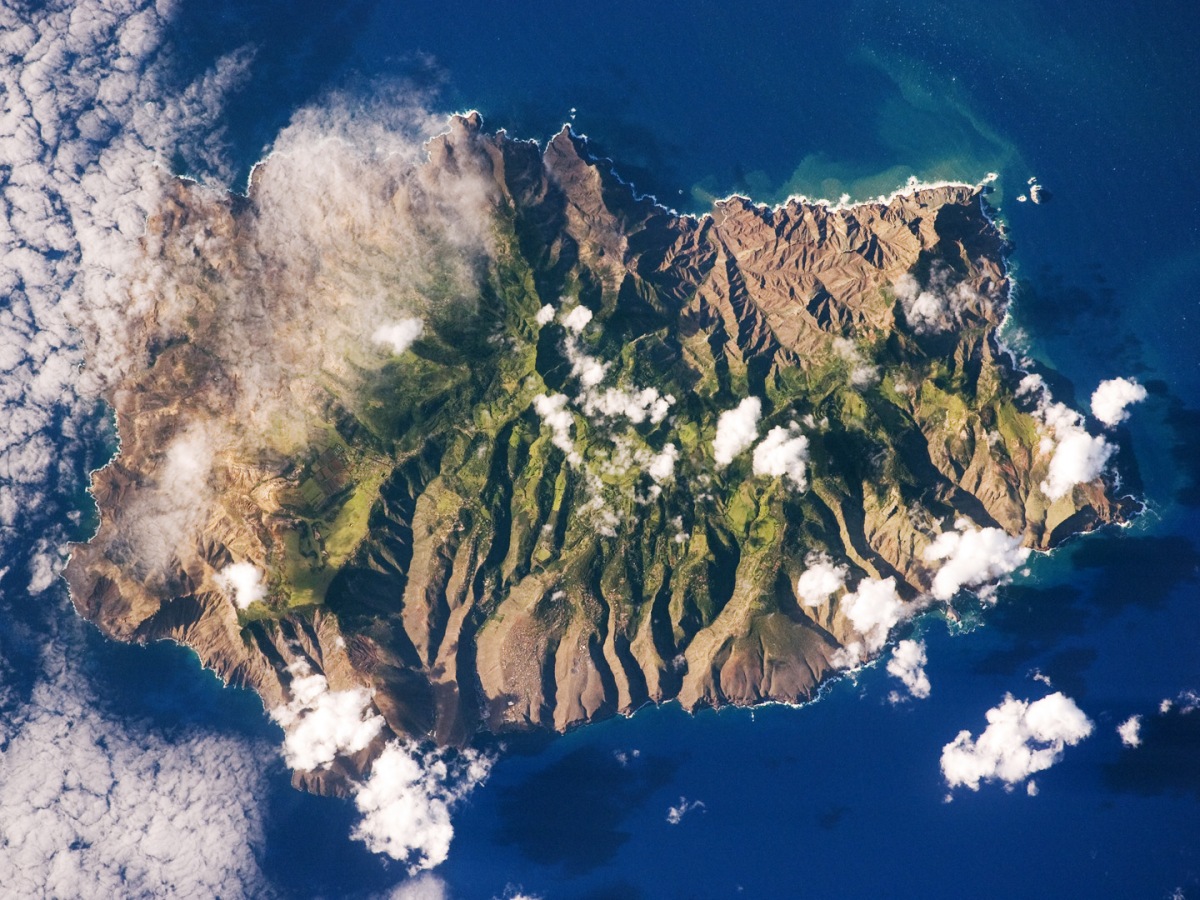
This is part one of the 2019 Black History Month series on two important sites- the African Burial Grounds in NYC and a tiny island called St. Helena. In this first part, I thought it would be helpful to start with the backstory of St. Helena Island.
In the 16th century, a Portuguese soldier named Fernão Lopes decided to exile himself on a tiny slip of land located in the South Atlantic Ocean off the southern coast of Africa called St. Helena Island. At the time, the Portuguese had set an agenda to build an empire and began expanding east into Asia. Because of its location in the Atlantic, the Portuguese had claimed the island that served as a rest stop on voyages from Africa to the Americas. The island was untouched, and the fertile soil meant that the goats, introduced to the island by Europeans, were thriving.

General Afonso de Albuquerque, considered a tactical genius and hailed as a conqueror, sought to spread Christianity, push back the spread of Islam and control the Asian spice trade. To this end, he was able to capture Goa, and left Lopes in charge of maintaining order and enforcing Portuguese law while Albuquerque went back to Portugal to get reinforcements.
While he was gone, Lopes and a few other soldiers under his command converted to Islam and joined the resistance against Portuguese rule. When Albuquerque returned, he regained control of Goa, and made a deal with the resistance in which Lopes and the other rebels were given over to the Portuguese army. It was negotiated that they would not be killed. However, Albuquerque didn’t say they wouldn’t be punished in other ways. They were tortured and disfigured- cutting off pieces of their face and limbs. Some were tortured so badly that they died within days. The others were released into the jungles of India where many lived until 1515 when Albuquerque died.
After Albuquerque’s death, Lopes decided to leave India and return to Portugal. He was able to get onto a ship headed that way. During the trip, the ship made port at St. Helena for food and water. It’s not clear whether Lopes snuck off the ship or was left, but he ended up staying on the island along with a rooster who became his only companion. It was a year before another ship came to rest in St. Helena. Long story short, Lopes was eventually absolved of his crimes and went back to Portugal, but only for a short time. Having gotten used to his lifestyle on the island, Lopes headed back to St. Helena where he eventually died.
Although Lopes ultimately decided to exile himself (not exactly a prisoner), but it was the start of St. Helena’s legacy as a prison island. The first known record of a prison structure being built on the island was from 1683. Eventually, the island became known for its famous captors like Napoleon and Prince Dinuzulu of the Zulu Kingdom. The island also played a role in the Anglo-Boer War as the hold for 1000s of Boer prisoners of war.
So, how did St. Helena become the final resting place for 1000s of freed slaves? In 1807 when the British slave trade was abolished, there wasn’t a neat and hard stop. In fact, when the decree was issued, there were ships in the water on their way to the Americas. The slave trade had been very lucrative. The Royal Navy began to police the water for ships filled with enslaved people en route to the Caribbean and the Americas. Some of these ships were made to turn back, but they all didn’t go back to the original port. They turned back to the closest point- St. Helena Island.
Between the 1830s- 1870s, it is estimated that over 25,000 slaves were freed and released on the island. By this time, St. Helena’s laws prevented the import of people to be used as slaves. Historic records note that the ships and its contents often arrived in very poor conditions.
“The island’s leather-bound archives reveal horrendous details of events nearly 180 years ago.
“In 1849, Anglican bishop Robert Gray described a slave ship being unloaded on the island of St Helena. “I never beheld a more piteous sight,” he observed of the people on board. Some were dead; many more were close to it. “They had a worn look and wasted appearance, and were moved into the boats like bales of goods, apparently without any will of their own.”
For many of those Africans and a few Europeans, St. Helena was their final stop. A few decided to make homes there. Those who could found their way back to Africa. Over time, as the population grew on the island, this time in history was forgotten or erased. Perhaps it was more of an “out of sight, out of mind” situation. There is some documentation that appeared in the 1980s that noted the presence of the burials needing to be relocated, but it seems there were just a few, rather than 100s.
It wasn’t until 2006, during the construction of an airport on the tiny island, that the remains of those individuals were found in the area known as Rupert’s Valley. This led to a mass excavation in 2008. During that excavation 325 complete skeletons were recovered. Single, multiple, and mass graves were recorded. A few were interred in coffins, but most were laid into the ground, bare. There were also 10 pits that held large groups of individual bones. It’s unknown how many individuals are represented in those pits.

RUPERT’S VALLEY ARCHAEOLOGICAL PROJECT
In part two of the series, I’ll talk about the burials and people excavated on the island.







